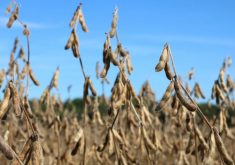The lower edge of the well-established trading range for the ICE Futures canola market was tested during the last full week of January, but support was uncovered to the downside and values are rangebound for now.
The nearby March contract traded as low as $791 per tonne on Jan. 25 but managed to claw back above the psychological $800 per tonne level. From a chart standpoint, the market could easily see a move to the $830 per tonne area, although with speculators adding to a growing net short position, any continued move higher will likely need an outside catalyst.
The new-crop November contract is in a range between $760 and $800 per tonne.
Read Also

Seeding Indigenous agricultural prosperity
National Circle for Indigenous Agriculture and Food says Indigenous agricultural success needs strong relationships.
With North America deep in the throes of winter, the state of South American crops could provide that influence. Argentina received some much-needed rain during the week, easing drought concerns in the major soybean-growing country to some extent. However, the coverage was variable and more moisture will be needed to prevent a complete crop disaster this year.
Parts of Brazil are also on the dry side, but conditions there have been much more favourable through the growing season. While production estimates out of Argentina continue to be revised lower, Brazil is expected to harvest a potential record-large soybean crop in 2023.
Some forecasters estimate Argentina’s soybean crop as low as 34 million tonnes, which would be well off the U.S. Department of Agriculture’s projection of 45.5 million.
For Brazil, trade estimates of around 152 million to 153 million tonnes would mark a sizeable increase from the 129.5 million tonnes grown in 2022-23.
Soybean harvest operations in Brazil are in their early stages, with the country’s second corn crop being planted into soybean stubble.
The closure of Chinese markets for the Lunar New Year limited some of the activity in North American grains and oilseeds during the week, but questions over the country’s demand should remain at the forefront of the markets in the weeks ahead.
The latest economic data out of China was on the soft side, but easing pandemic restrictions have analysts anticipating increased demand and economic activity.
Looking at wheat, welcome snowfall helped ease dryness concerns for winter wheat crops in Kansas during the week, with futures prices dipping below support. Australia’s large crop is also overhanging the market, but questions remain over Ukraine’s next crop. Forecasts calling for a polar vortex in the southern Plains were supportive because any areas that missed the latest snow are vulnerable to winterkill.
















